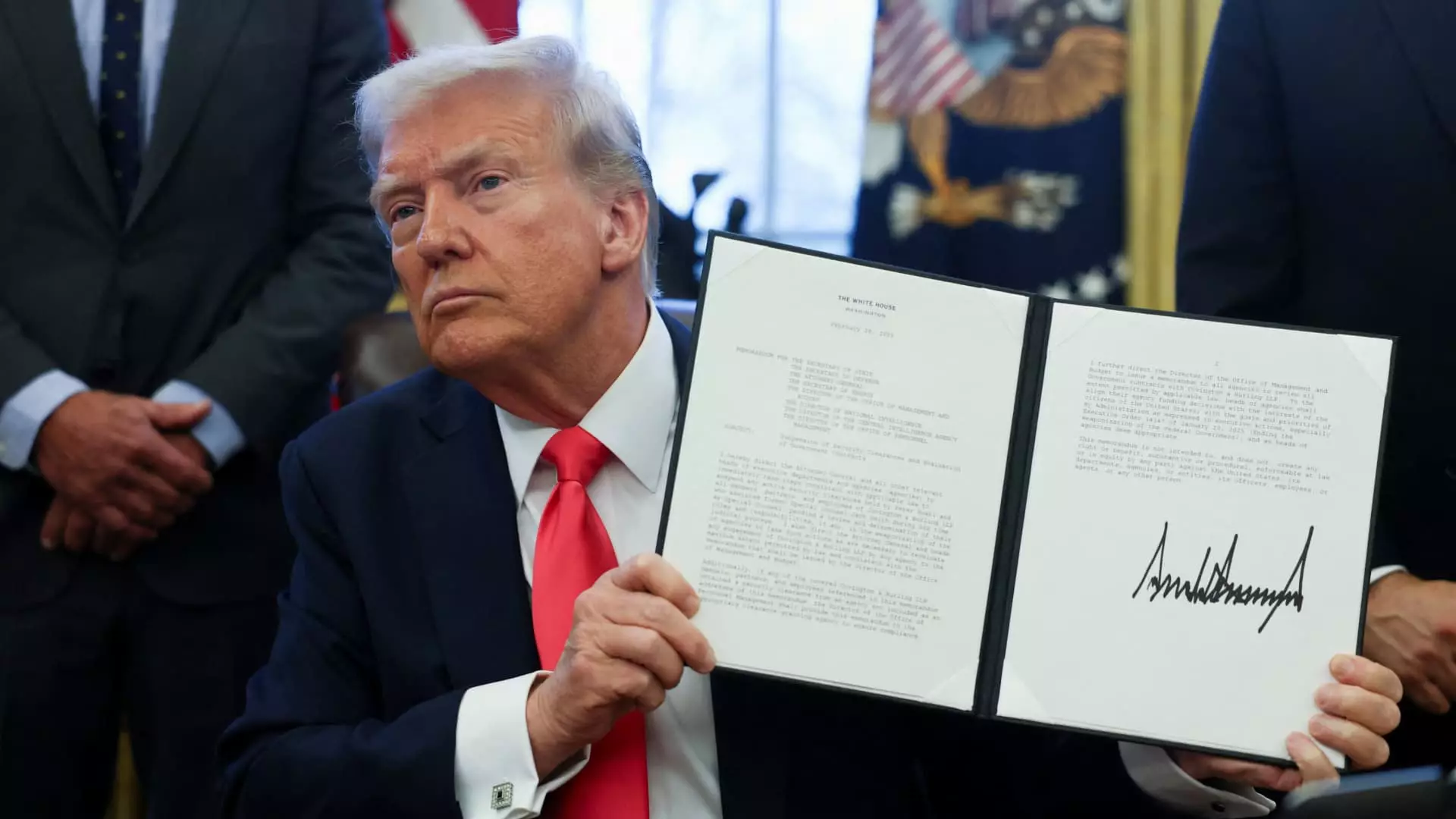In today’s globalized economy, tariffs serve as a potent tool in international trade relations, wielded to protect local industries, curb imports, and exert political influence. Recently, former President Donald Trump reignited discussions surrounding tariffs, specifically targeting Mexico, Canada, and China. His announcement of proposed tariffs to go into effect on March 4 illustrates a decisive move in his trade strategy, which is both controversial and far-reaching in its implications.
On March 4, the proposed tariffs of 25% on imports from Mexico and Canada. Trump claimed the need for these tariffs was rooted in concerns around the flow of illegal drugs into the United States. Citing a “scourge” that harms the nation, he asserted that until this problem was contained, tariffs were necessary. This approach reflects a broader narrative common in protectionist trade policies, linking economic measures with national security and public health concerns. The White House confirmed that these tariffs follow a prior suspension, adding layers of confusion about their immediate efficacy and prompting concerns over their impact on bilateral relations.
While this rhetoric might resonate with a domestic audience frustrated by issues of drug-related violence and smuggling, it oversimplifies the complexities of trade phenomena. The insinuation that tariffs can effectively reduce substance abuse and trafficking simplifies the depth of sociocultural issues that inform such crises. This aspect of Trump’s strategy warrants a closer examination, as the effectiveness of tariffs as a tool for solving non-economic problems remains unproven.
Following Trump’s announcement, reactions swept through Wall Street. Dow Jones Industrial Average futures dipped initially but recovered when markets opened. This volatility underscores the heightened sensitivity of financial markets to tariff announcements, which can influence business costs and consumer prices. Investors are often wary of tariffs as they can lead to increased costs for businesses reliant on imported materials, which in turn could be passed on to consumers, potentially leading to inflation.
The ripple effects of these tariffs extend beyond immediate market reactions. They are likely to disrupt supply chains that have evolved through decades of globalization and trade agreements. Industries reliant on imports may face increased operational costs, resulting in price hikes that can affect everything from consumer electronics to agricultural products.
Trump’s resurrection of tariffs as a central feature of his economic policy exemplifies his administration’s broader fight against perceived unfair trade practices. He positioned tariffs not merely as a revenue generator but as a tool for leveraging negotiations with foreign governments. Amid an atmosphere of fluctuating geopolitical tensions, Trump’s emphasis on tariffs seeks to re-establish American economic sovereignty.
However, this approach sparks a broader debate about the long-term viability of such policies. Critics argue that while tariffs might provide temporary relief for certain sectors, they can also instigate retaliatory measures from trading partners, leading to trade wars that ultimately hurt American businesses and consumers. The move towards reciprocal tariffs, treating foreign duties as a direct challenge to American trade interests, could escalate tensions and provoke a cycle of retaliation that undermines economic stability.
As Trump’s proposed tariffs loom on the horizon, it’s crucial for economic stakeholders to critically assess the implications of such policies. While the immediate goal may focus on curtailing drug trafficking and reclaiming American industry, the broader economic landscape deserves scrutiny. Tariffs can quickly spiral into complex trade conflicts, potentially inciting retaliatory measures that contribute to global economic instability.
Ultimately, the implementation of tariffs reflects a broader ideological stance on trade, favoring protectionism over collaboration. The effectiveness of this strategy remains to be seen, but it undeniably positions the U.S. in a contentious global discourse that prioritizes national interests, often at the expense of collaborative economic growth. As the deadline approaches, the ramifications of these policies will unfold, influencing the future of U.S. trade relations in profound ways.

